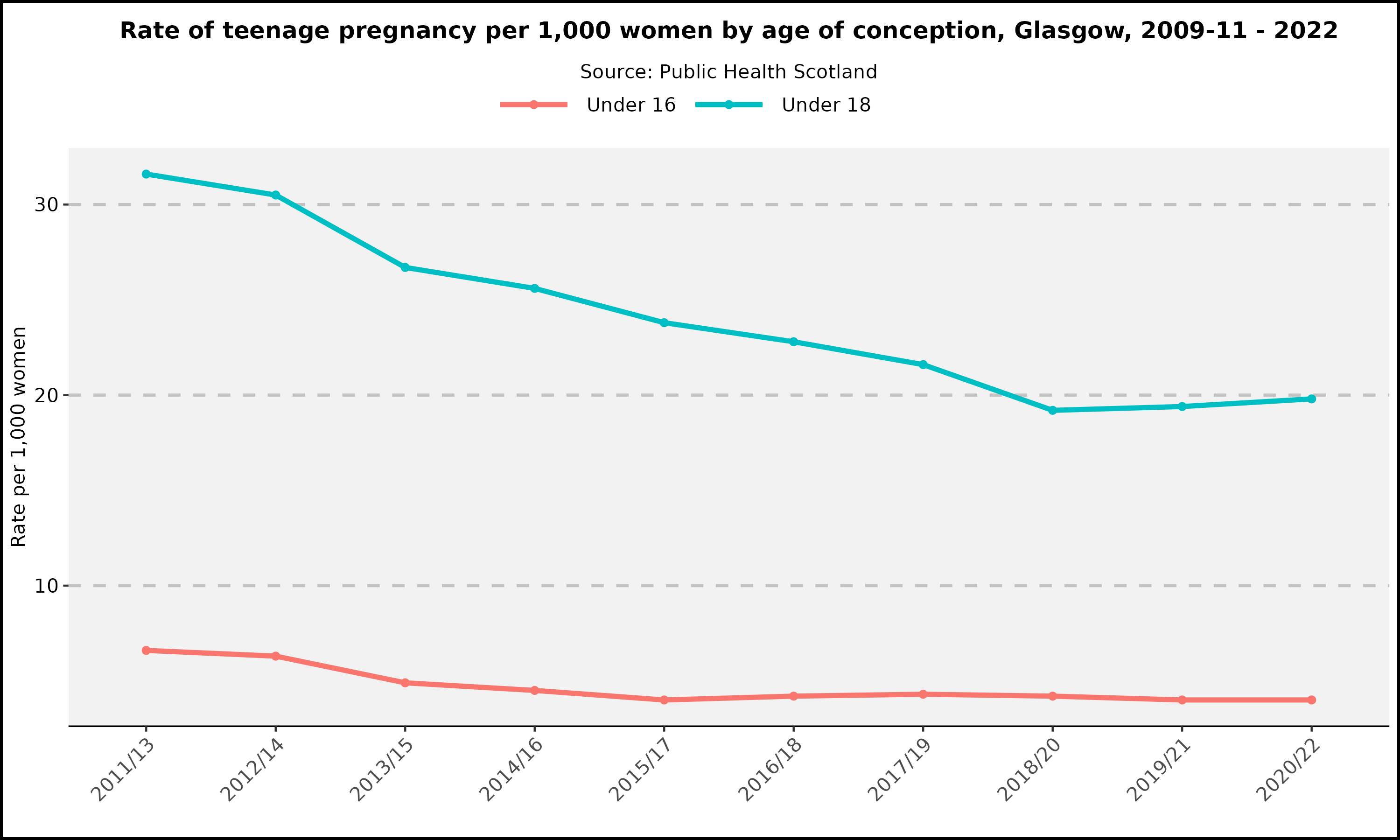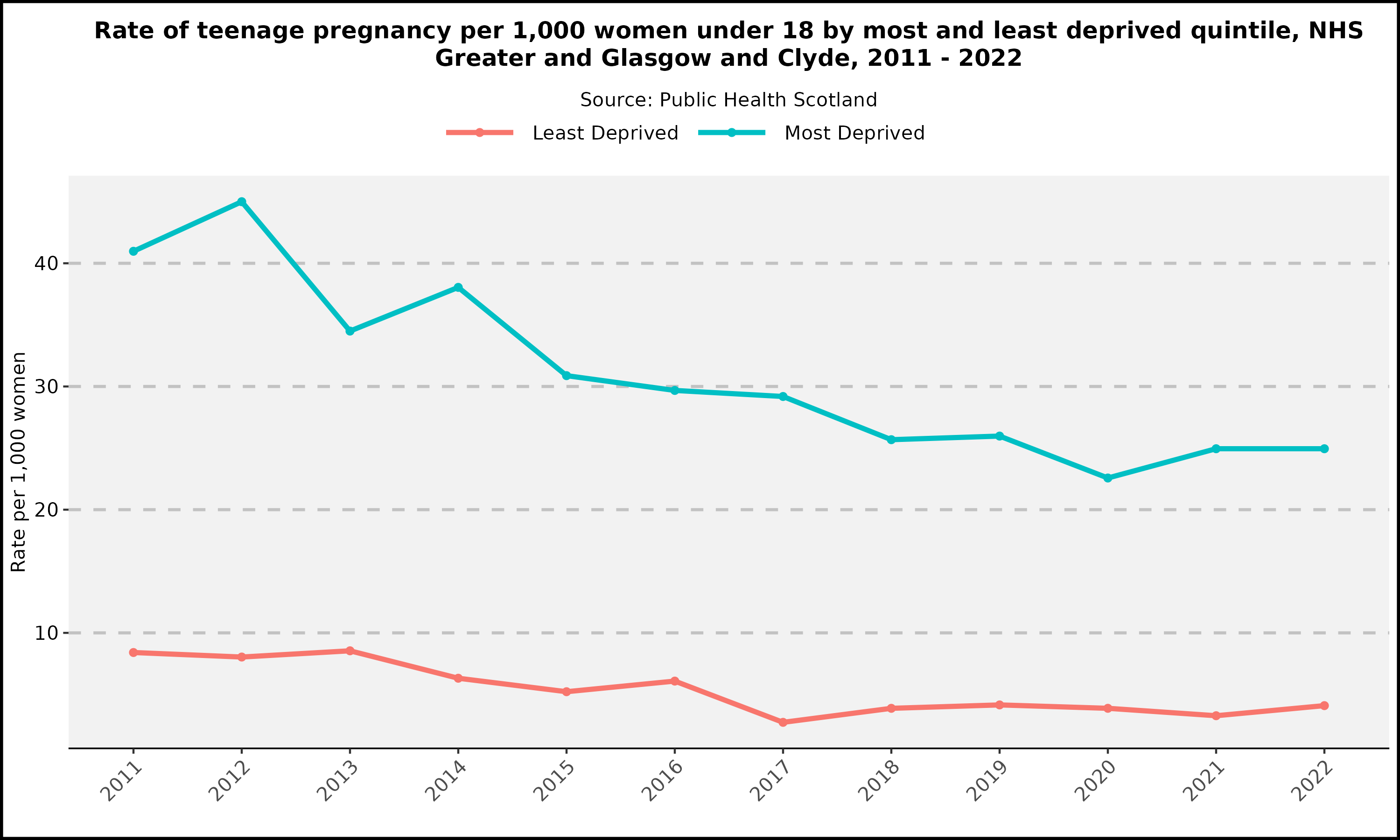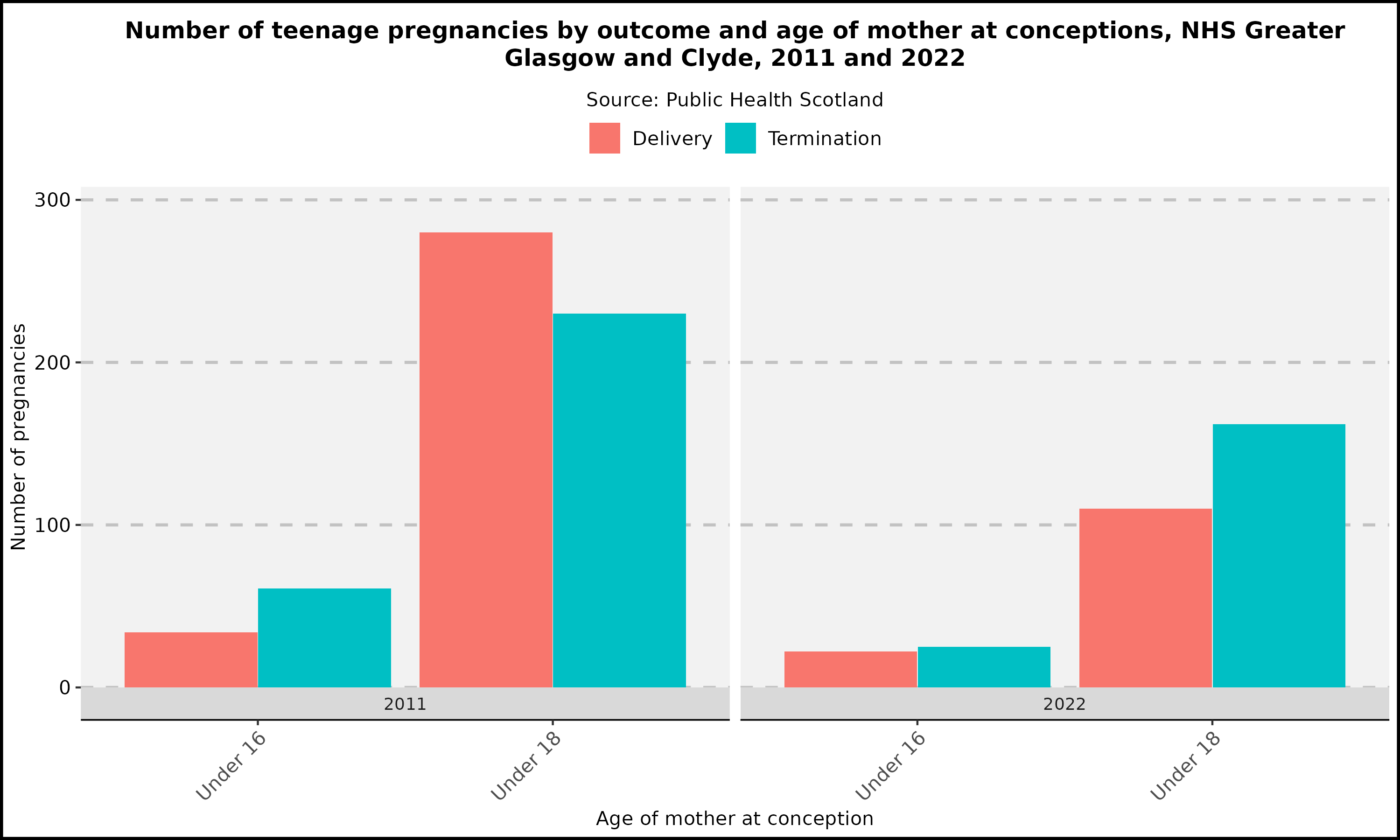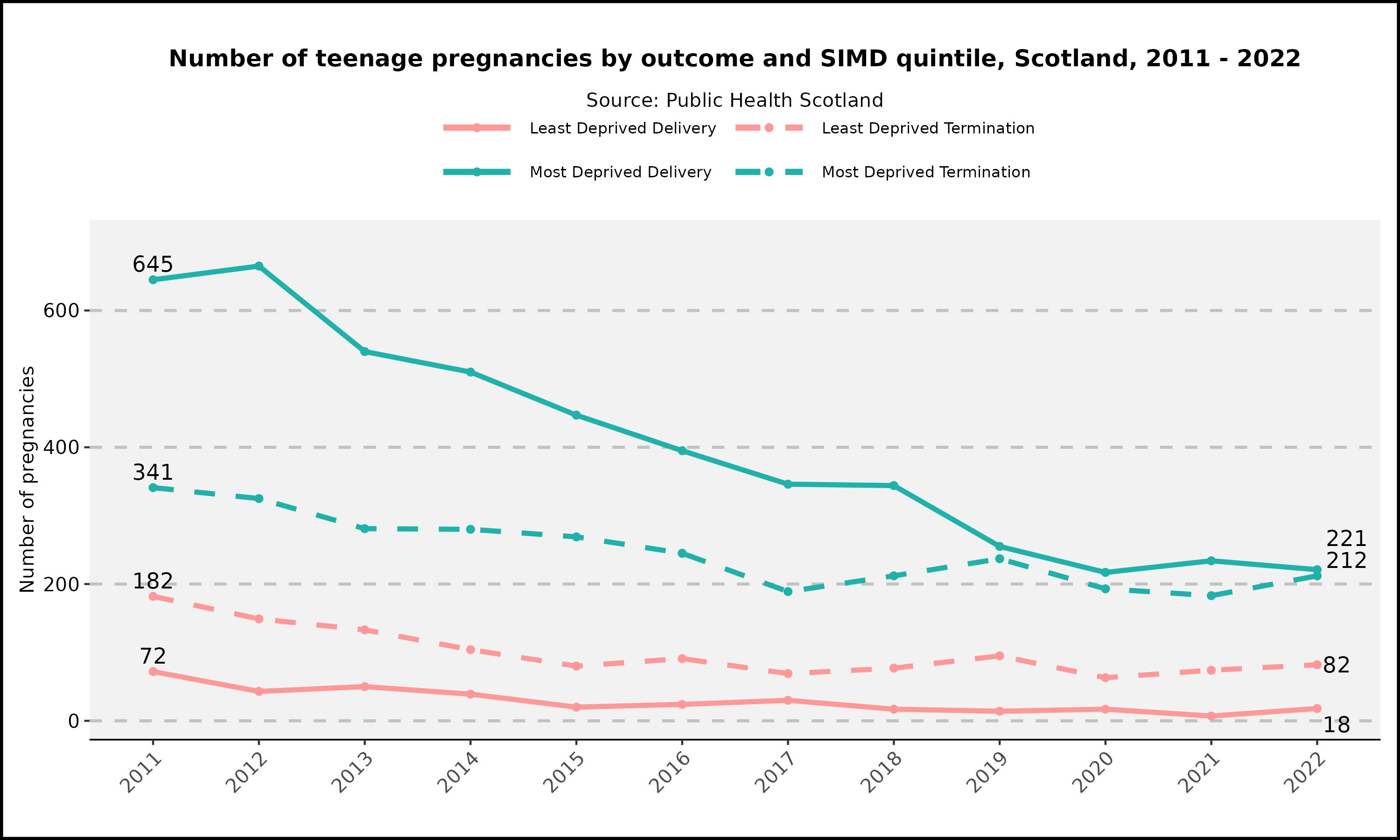Pregnancy among young people
This section provides data on pregnancy statistics among young people in Scotland, often referred to as teenage pregnancies. Mothers are grouped into one of two age categories: under 16 years and under 18 years, based on their age at conception. Data is derived from the annual update on teenage pregnancy statistics in Scotland by Public Health Scotland. The most recent data is for the year ending 31st December 2022.
In Glasgow there has been a downward trend in the rate of pregnancies among young people, in both age groups, since 2011-13.
The biggest reduction in pregnancies is among under-18-year-olds, where the rate has reduced from 31.6 to 19.2 per 1,000 females between 2011-13 and 2018-20, however the rate has seen a small increase since then to 19.8 per 1,000 in 2020-22. The rate of pregnancies among under-16-year-olds reduced from 6.6 to 4 per 1,000 females.

There are various factors which may account for the reduction in pregnancies among young people. First, there is a notable downward trend in risk-taking behaviours and alcohol consumption among younger people, and increased sexual health education and services in the community.
Secondly, the role of contraception in prevention of pregnancy also ought to be considered but data is either unavailable or contradictory to the reduction in teenage pregnancy data. For more information see the Sex and contraceptive use page.
Deprivation
The number of pregnancies among young people has reduced across all SIMD quintiles between 2011 and 2022, at a national level and in NHS Greater Glasgow and Clyde, across all age groups. This data was not available at a local authority level.
Under-18-year-olds
In NHS Greater Glasgow and Clyde, pregnancies among under-18-year olds in the most deprived quintile (SIMD 1) decreased at a slower rate than for those living in the least deprived areas (by 39.1% and 51.3%, respectively).
The absolute difference between SIMD 1 and SIMD 5 among this age group shows a reduction from 32.6 per 1,000 females in 2011 to 20.9 per 1,000 females in 2022.

Pregnancy outcomes
This section provides data on pregnancy outcomes among young people in Scotland. Two pregnancy outcomes are measured: pregnancies which result in a birth, and pregnancies which result in a termination. There is no data on pregnancies which result in a miscarriage. Young people who are pregnant are grouped into one of two age categories: under-16-years and under-18-years, based on their age at conception.
Glasgow
Similar patterning was seen in NHS Greater Glasgow and Clyde. In 2011, under 16-year-olds who were pregnant were more likely to have a termination, and under-18 and under-20-year-olds who were pregnant were more likely to have a delivery. In 2022, pregnancies across both age groups were more likely to result in a termination than a delivery.

While these figures may suggest that rates of terminations among young people are increasing, it is not necessarily the case, because at the same time the rate of pregnancies among young people is also falling. Therefore, while the proportion of pregnancies which result in a termination in 2022 is higher than in 2011, the actual number of terminations in 2022 was lower because there were fewer pregnancies.
Deprivation and outcome
The data presented is only available at a national level, but there are notable trends which could be extrapolated to a Health Board level, particularly in areas of high inequalities.
Across Scotland, between 2011 and 2022, there was a reduction in the number of pregnancies among under 18s which resulted in delivery across the most and least-deprived quintiles. There was a 75% reduction in the least-deprived quintile and a 65.7% in the most-deprived quintile from 2011 to 2022.
The percentage of terminations decreased by 54.9% in the least-deprived areas and 37.8% in the most-deprived areas.
Overall, under 18s from deprived areas who are pregnant are more likely to deliver, and those from the least-deprived areas who are pregnant are more likely to have a termination. As the total number of pregnancies has changed for both the most and least-deprived areas the percentage of births was also calculated. The percentage of pregnancies which were deliveries decreased from 28.3% to 18.0% for the least deprived and from 65.4% to 51.0% for the most deprived.
These findings are significant because of the link between pregnancy and poorer outcomes for young parents and their children. Research shows that for parents, there is a higher risk of poor educational attainment, social isolation, and poorer mental and physical health. While children are more likely to be born preterm or with low birthweight. There is also the increased risk of mother and child living in poverty.

Notes
This page was updated in April 2025.
